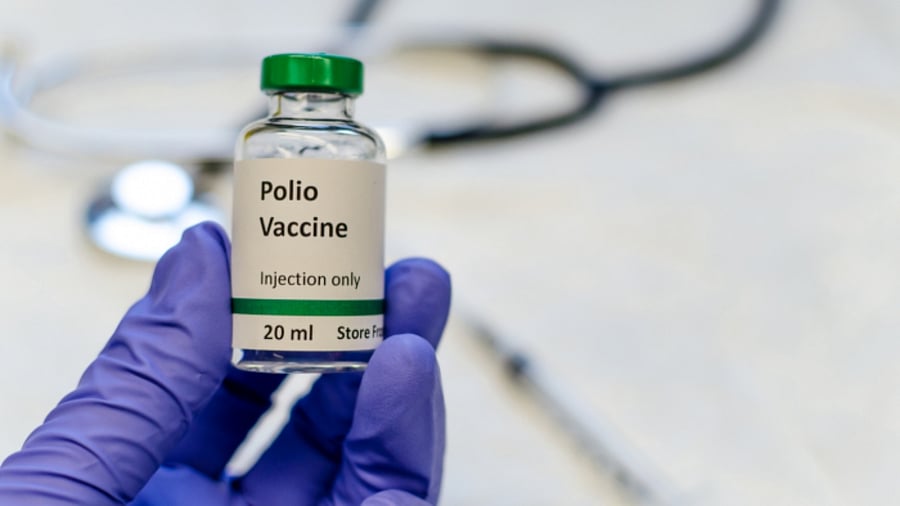
Wild polioviruses (WPV) are of three types; WPV2 and WPV3 were declared eradicated in 2015 and 2019, respectively. The World Health Organisation (WHO) South-East Asia Region, including India, was declared free of WPV in March 2014, and the WHO African Region was certified in August 2020.
Afghanistan and Pakistan are the two remaining endemic countries, having never interrupted WPV1 transmission. Environmental surveillance, detecting poliovirus in sewage samples, links poliovirus isolates from unknown individuals to populations served by the wastewater system. It is useful for monitoring circulating vaccine-derived poliovirus (VDPV) and assessing population immunity of populations vaccinated with inactivated poliovirus (IPV).
Also Read: Polio virus found in New York City wastewater, suggesting local transmission
What are VDPVs, and why do they matter?
Oral polio vaccines (OPV) are inexpensive, safe, and effective vaccines that were predominantly used in the eradication initiative, including in India. The attenuated poliovirus(es) contained in OPV multiply in the intestine (of the vaccine recipient) and mount an immune response. OPV has several benefits besides the ease of administration as oral drops. The live attenuated (weakened) vaccine virus provides better immunity in the gut, which is where polio replicates. Further, the vaccine virus is excreted in the stool, and in areas with low-quality sanitation can spread from person to person, multiplying protection at the community level.
In communities with low immunisation coverage, as the vaccine virus circulates in unvaccinated populations, the vaccine virus can mutate to a paralytic form – the Vaccine Derived Poliovirus (VDPV). The mutant form can cause paralysis, just like the wild poliovirus, and spread in communities leading to circulating VDPVs (cVDPVs). The lower the population immunity, the longer these viruses survive, replicating and exchanging genetic material with other enteroviruses as they spread. If a
population is fully immunised, it will be protected against the spread of both WPV and VDPV. cVDPVs are considered public health threats that warrant a systematic outbreak response; in general, these are easily and successfully contained.
VDPV2 detected in sewage from North and East London
1 to 3 ‘vaccine-like’ polioviruses have continued to be detected each year in UK sewage samples but were one-off findings attributed to individuals vaccinated overseas with OPV who briefly ‘shed’ traces of the vaccine-like poliovirus. The UK Health Security Agency (UKHSA) reported identifying 116 polioviruses from 19 sewage samples between February and May this year. While no clinical case of polio has been detected yet, the genetic diversity of the viruses suggests its spread between closely-linked individuals in several London boroughs.
The UKHSA has declared the situation a ‘national incident’. While the UK has been free of polio for decades and considered a low-risk country, vaccine coverage for childhood vaccines has waned nationally over recent years and particularly in parts of London. A recent release of the UKHSA reported 86.6 per cent coverage with primary polio vaccination course in children turning 12 months in London; the coverage was below 85 per cent in 8 of 33 London Local Authorities. This led to the Joint Committee on Vaccination and Immunisation (JCVI) recommending on 10 August one dose of inactivated poliovirus vaccine (IPV) to all children aged one year to less than ten years across London. The aim is two-fold: prevent cases of paralysis and interrupt transmission of VDPV2 in the community.
The New York situation, a clinical case too
The New York State Department of Health (NYSDOH) and the New York City Department of Health and Mental Hygiene (NYCDOHMH) announced on 12 August the detection of VDPV in sewage in New York City. Earlier, a clinical case of polio was confirmed in Rockland County, bordering New York City. Similar detections of the virus in wastewater samples collected in counties neighbouring New York City in the last three months suggest likely local circulation of the virus. Both Rockland and Orange counties in lower New York have lower childhood vaccination rates – 60 per cent and 58 per cent, respectively.
Final steps towards eradication prove the most difficult
The Global Polio Eradication Initiative (GPEI) has, in recent years, including in the context of the ongoing pandemic, been worried about “negligible progress and waning population immunity in high-risk countries and regions” and noted “a deteriorating epidemiological state, as past approaches have proven insufficient”. There are two primary goals in the GPEI’s Polio Eradication Strategy 2022–2026: Goal One to permanently interrupt all poliovirus transmission in endemic countries and Goal Two to stop cVDPV transmission and prevent outbreaks in non-endemic countries. It seeks to transform its approach through five mutually reinforcing objectives: create urgency and accountability to generate stronger political will; generate vaccine acceptance through context-adapted community engagement; expedite progress through expanded integration across a broad range of partners; improve and empower the frontline workforce; and, enhance detection and response through sensitive surveillance.
GPEI agencies, governments and global, national and local stakeholders are committed to achieving eradication through collaborative engagement and collective pursuits. The detection of VDPVs points to some key gaps that need to be identified early and contained effectively.
(The writer is Chairperson at the Centre of Social Medicine & Community Health, Jawaharlal Nehru University, New Delhi)
Disclaimer: The views expressed above are the author's own. They do not necessarily reflect the views of DH.